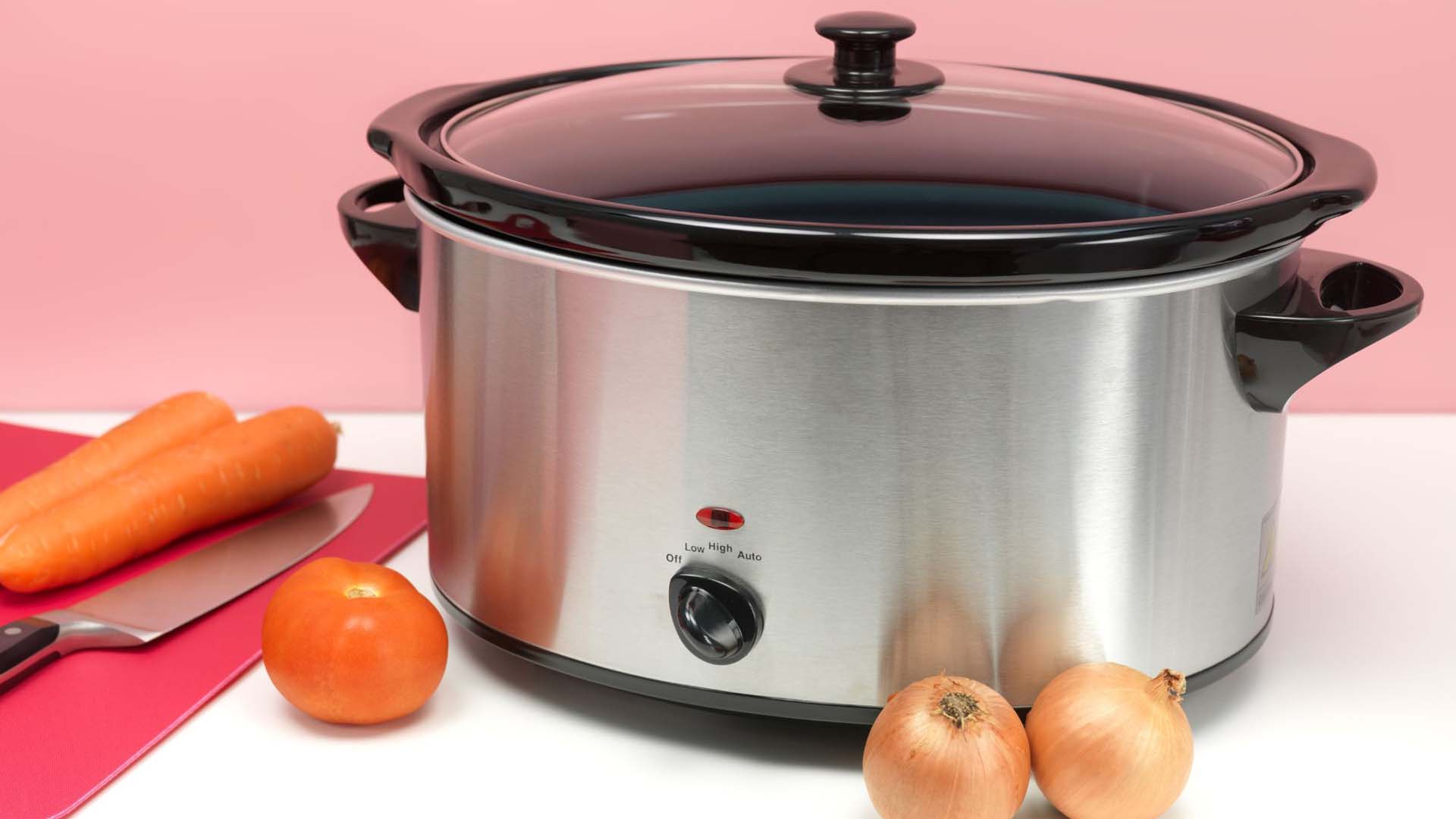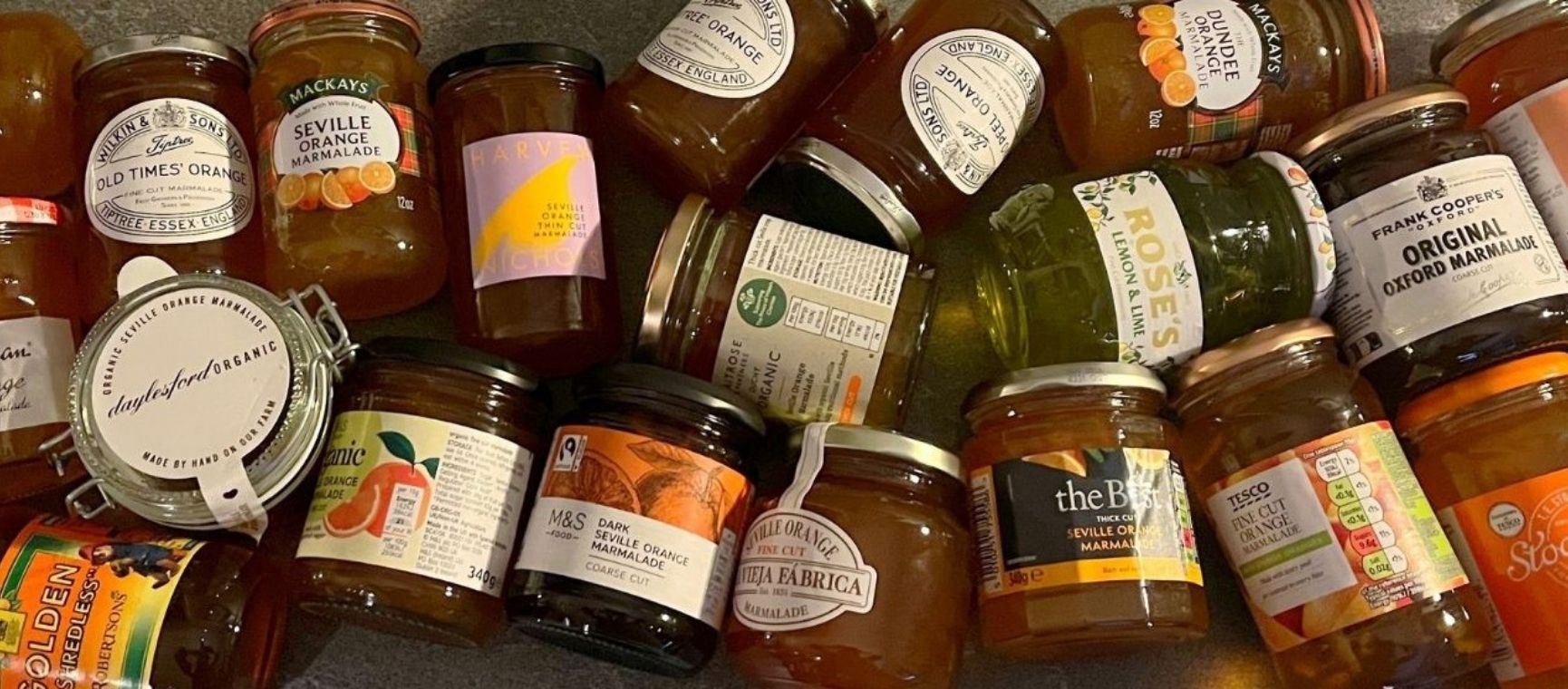
There are so many different marmalades available to buy that even Paddington Bear must be left scratching his head at times with the choice.
Our supermarket shelves are groaning with jars of fine cut, shredless, thick cut, dark, Seville and Dundee marmalades.
So which one is the best marmalade to buy? We've put more than 20 different varieties to the test to find out which to spread on your toast in the morning.
Our panel of testers first tasted each marmalade without any accompaniment, before spreading some on buttered toast (white bread with slightly salted butter).
Some of our testers are regular marmalade eaters, while one confessed to never having eaten the orange conserve before.
Our winning marmalade was La Vieja Fabrica Seville Orange Marmalade. A fine cut marmalade, it was a classic marmalade with the right blend of fruit, sugar and bitterness and the right consistency.
Second was Daylesford Seville Orange Marmalade, it slightly pipped La Vieja Fabrica on taste, but lost points for being three times as expensive and in a fiddly clip-top jar.
Third was shared between M&S Organic Marmalade and Cooper's Traditional Oxford Marmalade, both excellent for different reasons.
And the worst marmalade? The shame was shared by Stockwell & Co (the budget range from Tesco) and Aldi, a supermarket that regularly scoops top spot for its products in our taste tests.
The word marmalade comes from the Portuguese marmelo, a type of quince paste, flavoured with rose water and cut into squares.
The British discovered the confection 500 years ago, but the first recipe in English was in 1602, where Sir Hugh Plat describes its firm texture in his book Delightes for Ladies.
It wasn't until the late 18th century that the first commercial spreadable marmalade was made in Dundee.
365g - price: from £2.15-£2.50 (Tesco, Waitrose, Ocado, Amazon)
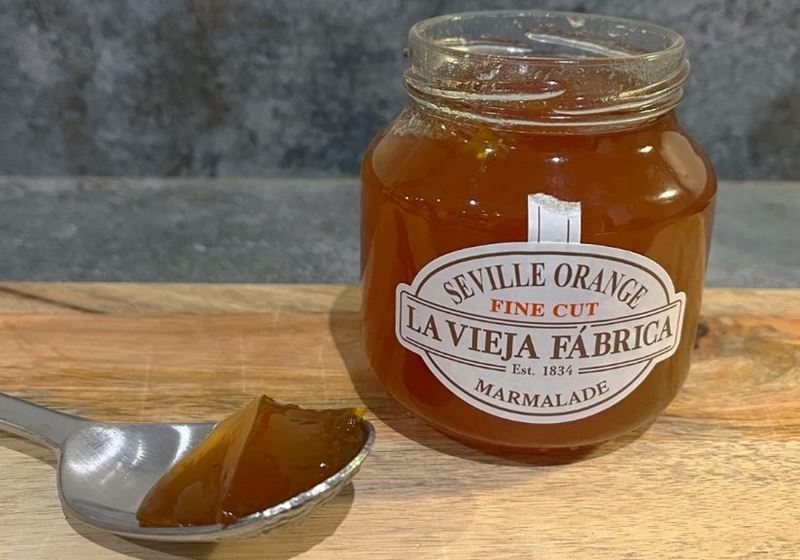
La Vieja Fabrica Seville Orange Marmalade is the brand's original marmalade, made in Spain from locally grown oranges and slow cooked for flavour.
It contains 40g of fruit per 100g. There was the distinctive 'toffee apple' type taste you expect from marmalade on first sampling, followed by sugar and fruit, which our testers really enjoyed. One tester even thought there was a hint of mint at first taste - which they liked. This fine cut variety was also popular for its texture, with a good balance of shred and not too hard set.
At £2.15-£2.50 a jar, it was a mid-priced jar among our contenders.
For taste, texture and price, our testers were unanimous that this was their favourite and the one they would buy and recommend.
227g - Price £8.25 - £9.50 (Daylesford, Ocado, Amazon)
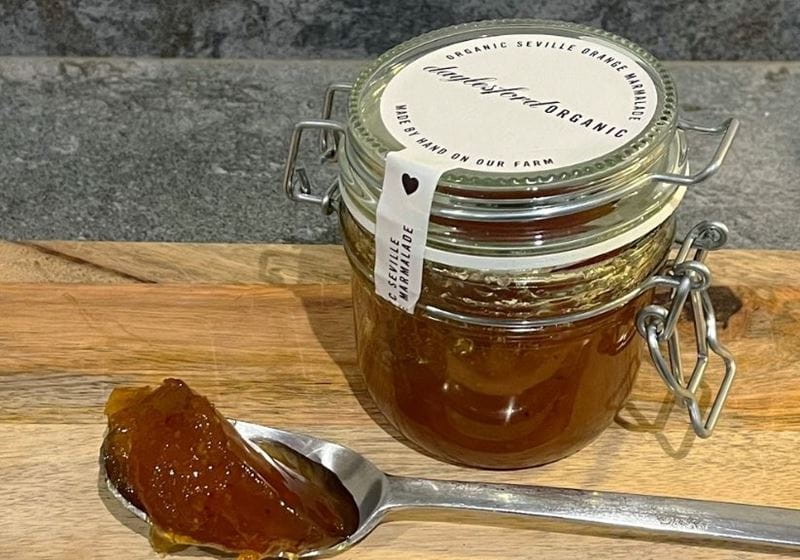
The Daylesford marmalade was beautifully presented in a clip-top jar (although that turned out to come with downsides). It looked expensive and would be a classy addition to a breakfast table.
Daylesford says the marmalade is hand-made to a recipe used by the farm for the past 15 years. It looked and smelt delicious and really did taste home made.
"This is delicious," one of our panel said. "It's how you hope marmalade will taste."
The marmalade was just as good on toast, the thick cut shred was well balanced and it had a good texture overall. It also contained the highest percentage of fruit at 66%.
However when our testers were told the price they were all shocked.
"That's too much," one exclaimed.
The marmalade also lost points as the wire attaching the lid to the jar bent, making it difficult to reseal.
A lovely marmalade if you are are prepared to swallow the price too.
340g: price - £2.25 (M&S, Ocado)
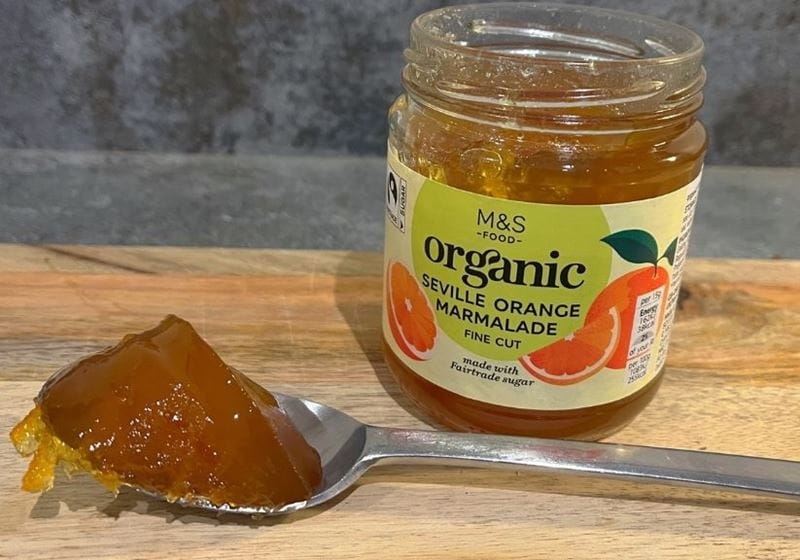
The M&S Organic Seville Orange Marmalade is made with fine cut Seville oranges and fairtrade sugar. Being organic it is produced with fewer pesticides, no herbicides no artificial colours or preservatives.
This one contains 38% fruit, which is lower than our two top marmalades, but our tasters agreed that it shared the same 'toffee apple' taste. They liked the texture and noted it didn't have as much shred as the others. The marmalade tasted as good on its own as on toast and the panel appreciated the positive aspects of its organic rating - at a good price.
A well-deserved bronze for this marmalade.
454g - price: £2.90-£3.15 (Waitrose, Sainsbury's, Tesco, Asda, Morrisons)
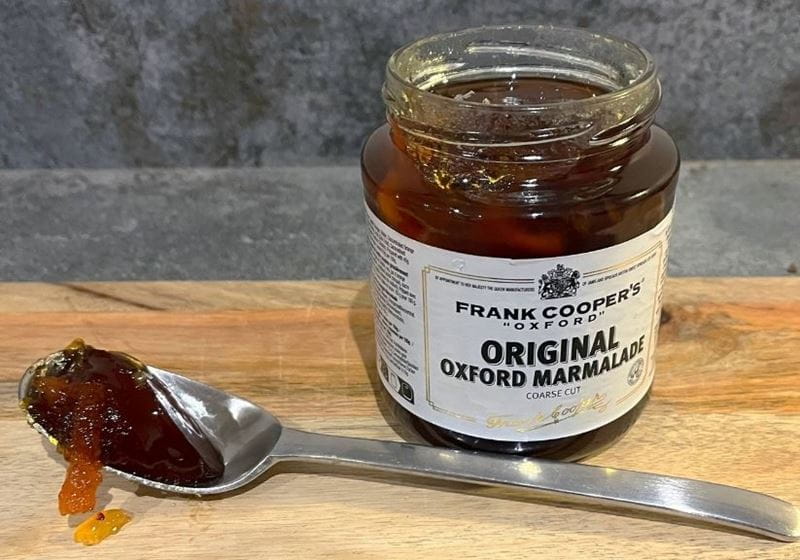
The Coopers Original Oxford Marmalade is directly descended from an 1874 recipe. It is made using coarse cut Seville oranges and contains 40g of fruit per 100g.
Coopers has a Royal Warrant and Ian Fleming described the brand's Vintage marmalade as James Bond's favourite breakfast, in From Russia with Love.
But back to the Original on test - and the morning staple of one of our testing panel. Our tasters liked the look of the jar and the marmalade was a good texture. They enjoyed the combination of sweetness and bitterness, the marmalade was a coarser cut to others tested, but the panel felt it was a good balance.
"It's not as fruity," one pointed out. And even though its fruit content was higher than most, the fruit didn't come through as strongly as some of the higher scorers.
On balance it was a good marmalade, delicious on toast and a worthy joint bronze winner. The jar was discreetly taken home by one fan on our panel.
In the 19th century the British love affair with marmalade began in earnest. It was shipped to all corners of the British empire, the Royals ate it, Sir Edmund Hillary took a jar for his ascent of Everest, and when Captain Scott set off for the Antarctic in 1910, he packed jars of Coopers marmalade - years later, a jar was found buried in the ice.
Since then Enid Blyton characters have eaten it, 007 James Bond enjoyed it for breakfast and of course, the most famous of all, Paddington Bear devoured the preserve between slices of bread.
340g - Price: £1.80 (Morrisons, Amazon)
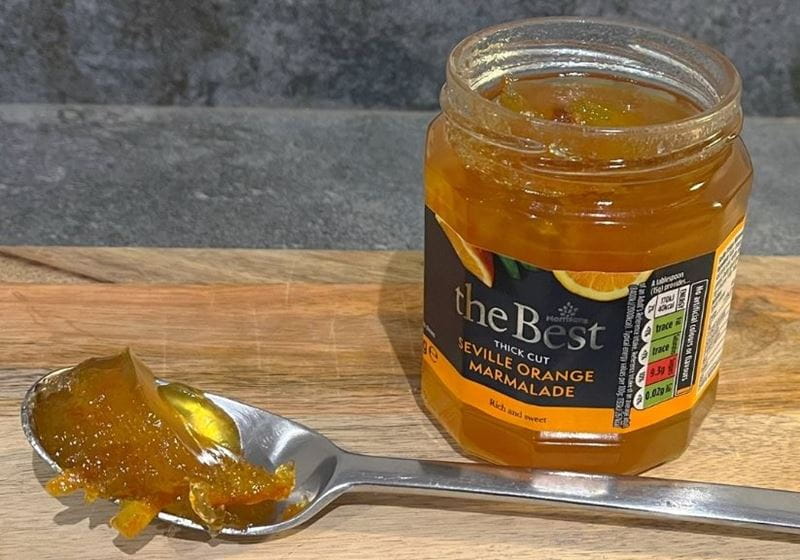
This marmalade is made of Seville oranges and manufactured in the UK. Testers thought it had a good balance of sugar and bitterness. It wasn't as fruity as our top four, but that was to be expected as it contains less fruit than them - with 30g per 100g.
The conserve had a nice consistency, not too solid or loose and the shred wasn't overpowering. It held its flavour well on toast.
340g - Price £2.79 (Sainsbury's, Waitrose, Ocado, Amazon)
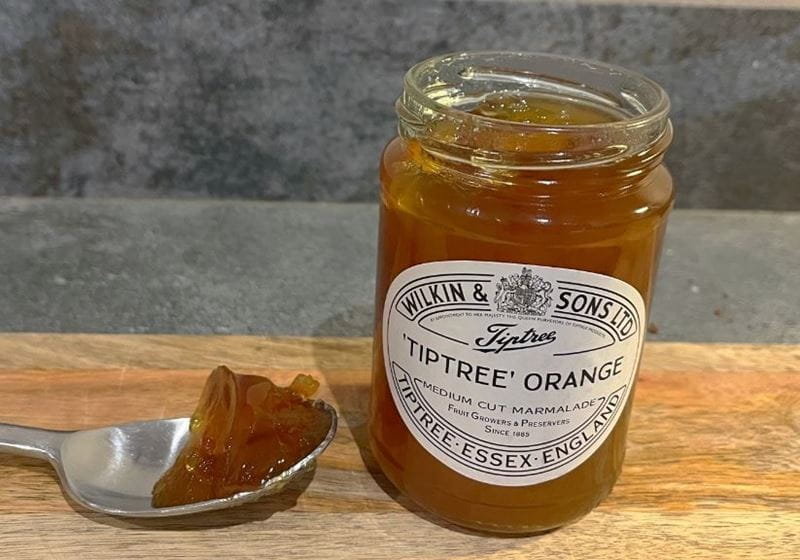
Tiptree produces 20 different marmalades, including ones made with whisky, ginger and tangerines. This is one of the brand's most popular, made with Seville oranges and with a medium cut shred.
This marmalade contains 45g per 100g and testers liked its fruity and tangy taste. It had a good balance of fruit and bitterness too. It was a good all-round marmalade, both alone and on toast.
454g - price: £1.10 (M&S, Ocado)
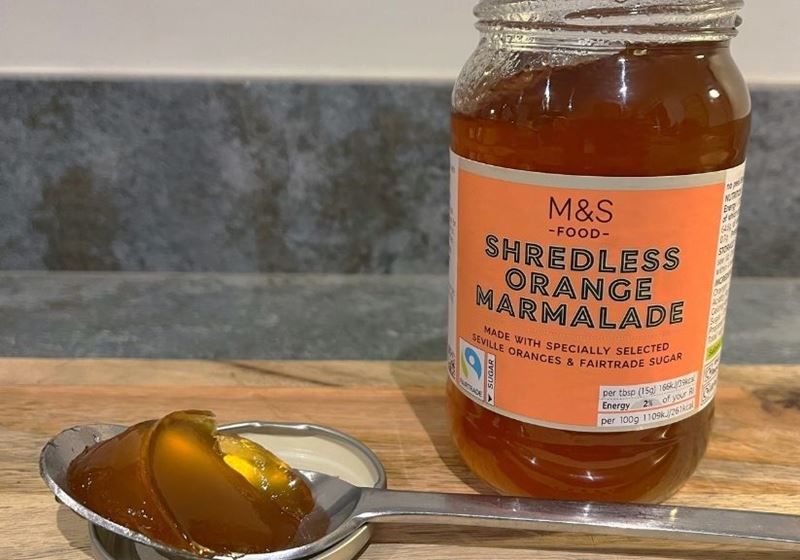
The M&S Shredless was our highest ranking budget marmalade - at half the price of our winner and containing almost 100g more conserve than many of those on test.
This one is made with Seville oranges but the fruit ratio was low, at 20g per 100g. However our testing panel still rated it as a good shredless marmalade.
"It's jelly-like but not rock hard, it's a nice taste, like something you'd get at a half-decent hotel," said one.
The taste was good on toast and our panel also thought this would be good for cooking.
340g - price: £2.79 (Waitrose, Ocado, Sainsbury's, Amazon)
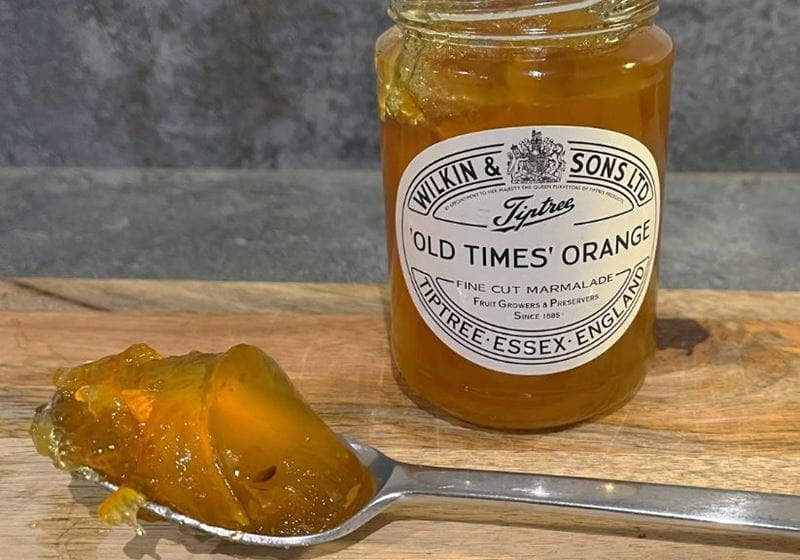
The Tiptree Old Times Marmalade is described by its maker as a traditional British marmalade, sweet but not too tangy.
Our testers agreed, as they felt it had that 'toffee apple' taste, but was slightly sweeter than some of the others on test. A fine cut marmalade, with 30g of fruit per 100g, this was a great all-rounder and nice solo or on toast.
340g - price: £2 (Sainsbury's, Morrisons, Ocado, Tesco, Co-op, Aldi, Spar, Waitrose)

This Mackays marmalade was first created in Dundee in 1797, and still made using copper pans today. It has 25g of fruit per 100g and is made from Seville oranges.
It wasn't a bitter marmalade, but the fruit came through, along with the taste of the shred. This wasn't an exceptional marmalade, but it was okay and better on toast.
340g - price: £2.79 (Waitrose, Ocado, Sainsbury's, Amazon)

Tiptree describes this as marmalade as sweet and not too tangy for those who do not wish to have peel. But our testers weren't keen on the texture.
"It's too soft," they complained. They also found it overwhelmingly sweet and even though it had 52g of fruit per 100g, they felt it didn't come through.
There was a hint of bitterness and it was okay on toast. This one didn't score as highly as the other Tiptree marmalades in the test.
325g - price: £5.50 (Harvey Nichols, Ocado)
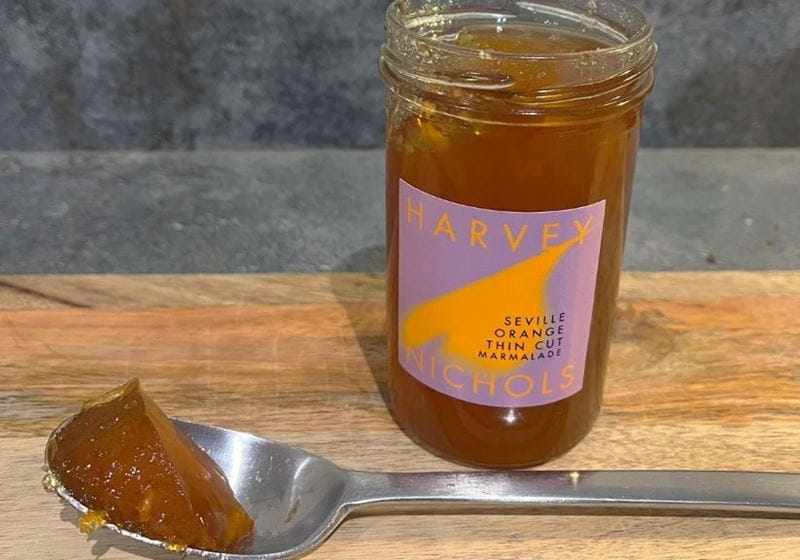
Our tasters were looking forward to trying the Harvey Nichols marmalade.
"Oh that's disappointing," one said, and the rest of the panel agreed.
At £5.50 this was our second most expensive jar on test, but no one felt it was worth the money. Testers felt there wasn't much bitterness coming through.
The marmalade contains 35g of fruit per 100g, but the taste of fruit should have been more noticeable.
The final verdict was that it wasn't memorable.
340g - price: £2.10 (Waitrose, Amazon)
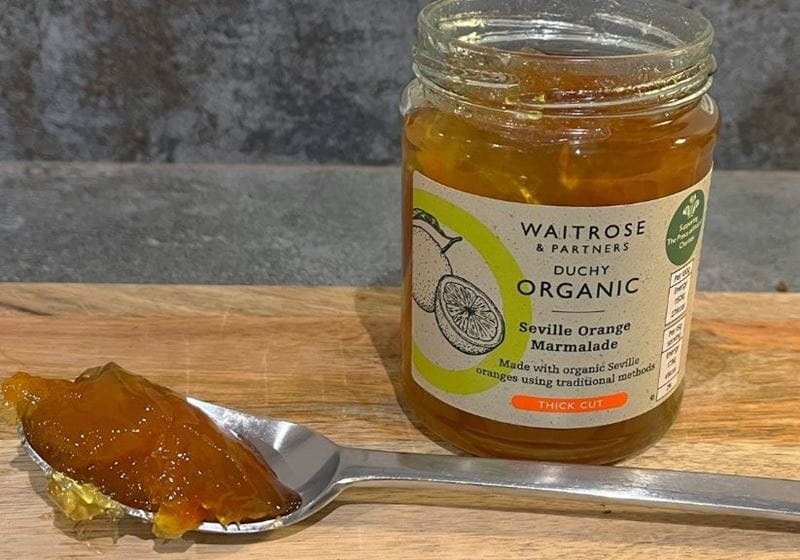
The second of the organic marmalades on test, this Duchy offering is made with Seville oranges and then hand-stirred in open pans using traditional methods. It contains 38g fruit per 100g so our testers had high hopes for this one.
However it was another underwhelming marmalade.
"Oh what a shame," one of our testers said. "I wanted to like this one."
The panel concluded that this marmalade was too sweet, with not enough bitterness or fruit taste. It wasn't any better on toast.
340g - price: £2 (Sainsbury's, Morrisons, Ocado, Tesco, Co-op, Aldi, Spar, Waitrose)
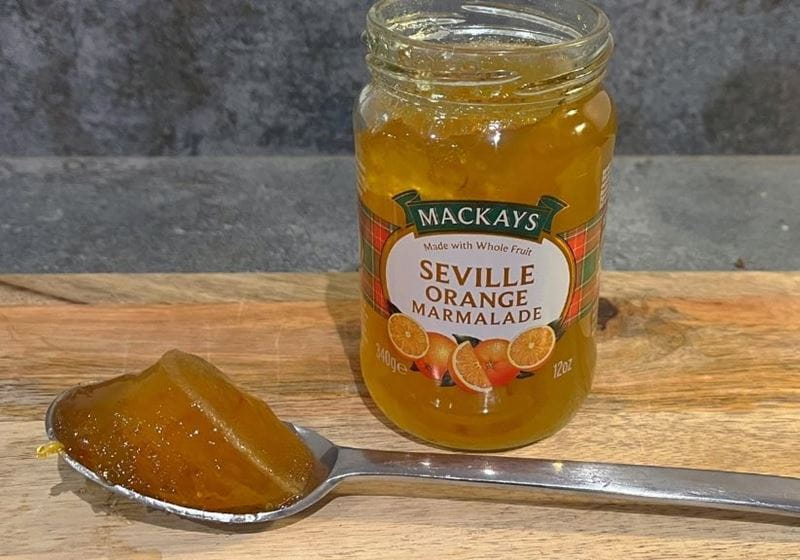
The second marmalade on test by Scottish brand Mackays, but it scored worse than the Dundee marmalade (reviewed above). This one is a traditional marmalade made from Seville oranges.
It contains 25g of fruit per 100g and our testers all commented on how they struggled to taste it.
"I'm getting sugar, shred and bitterness, but it's not fruity," one of our testers said.
340g - price £2.25 (M&S, Ocado, Amazon)
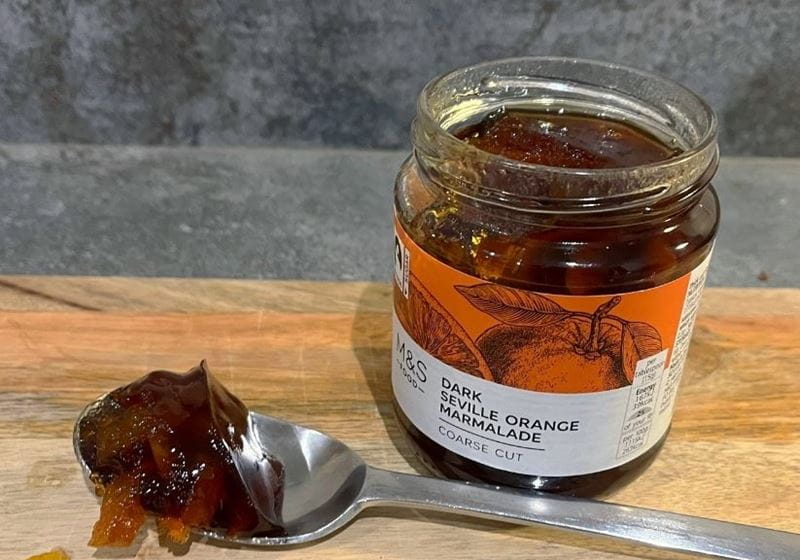
This felt more Marmite than marmalade. It certainly divided our testing panel.
This M&S marmalade contains 40g of fruit per 100g and is coarse cut.
However it was too full of shred for most of our testers.
"There's too much peel in it," moaned one. "You can't even spread it on the toast properly."
They thought the marmalade itself was nice, but all agreed there was too much peel. It's one for die-hard shred fans.
370g - price: £3.30-£3.50 (Morrisons, Waitrose, Sainsbury's, Tesco, Co-op, Amazon, Ocado)
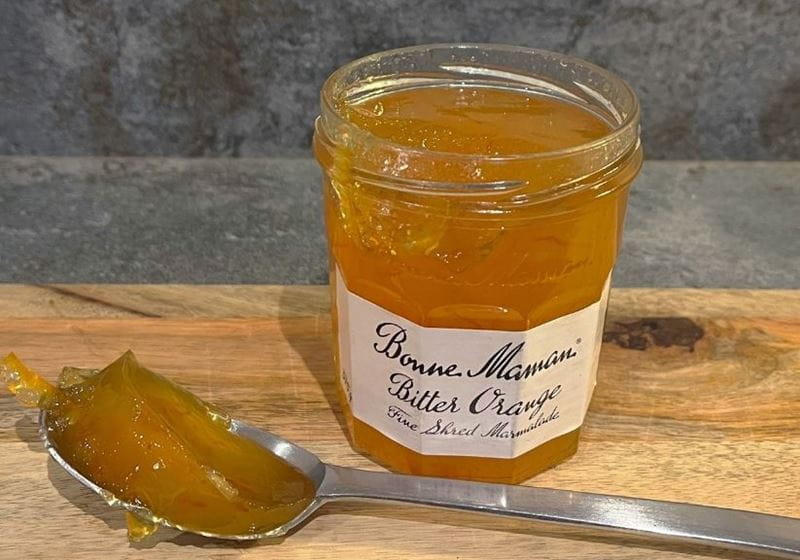
The French firm chooses to call its marmalade 'bitter orange' rather than naming it after the Seville fruits it contains - perhaps a small rebuttal to its Spanish neighbour.
But cross-border rivalry aside, our testers were looking forward to trying this jar.
"Oh how disappointing," one summed it up. "It's much too sweet and the texture is too soft."
It was more 'confiture' than traditional marmalade, and even though it boasted 30g of fruit per 100g, the taste didn't come through. Testers also said spreading it on toast made it worse.
454g - price: £2.70 (Asda, Sainsbury's, Tesco, Waitrose, Aldi, Amazon, B&M, Ocado)
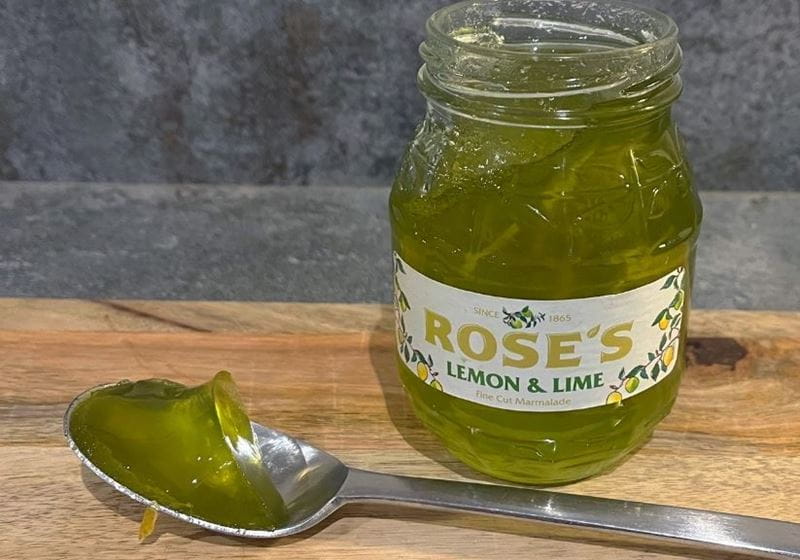
Almost everyone in our panel had at some stage tried, or remembered having a jar of this at home. It was introduced in the 1930s with the slogan 'The difference is delightful'.
Introduced as a zesty alternative to the usual Seville orange marmalade, it has remained popular since. But what did our panel think?
"It's really not marmalade is it?" one said. And the others agreed.
Prepared with 10g of lemon and 10g of lime per 100g (so 20% fruit in total), it had a nice zesty taste and was excellent on toast, but was more of a jelly or jam than a traditional marmalade. So although it tasted nice, it lost marks.
454g - price: £1.05 (Tesco)
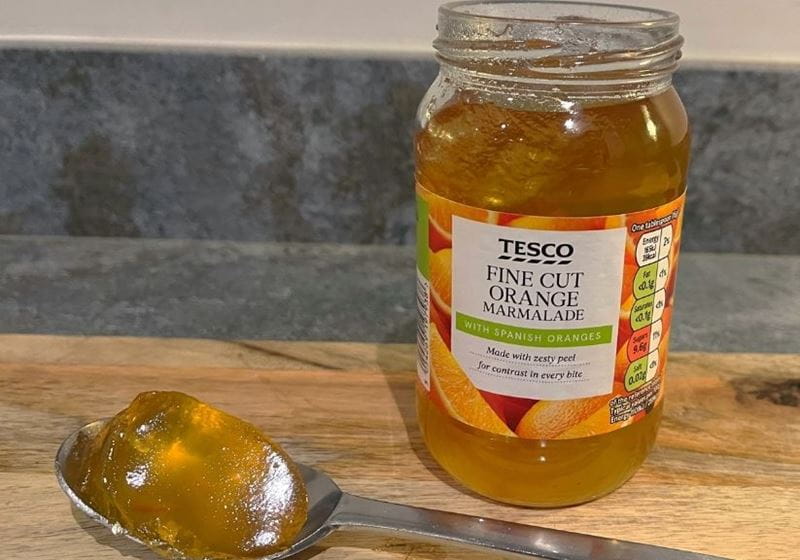
Another budget marmalade, with 20g of fruit per 100g.
This Tesco offering had a jelly-like consistency and while it did have a citrus taste, it was more a jam than a marmalade.
It was one our testers agreed they would struggle to remember.
454g - price: £1 (Waitrose, Amazon)
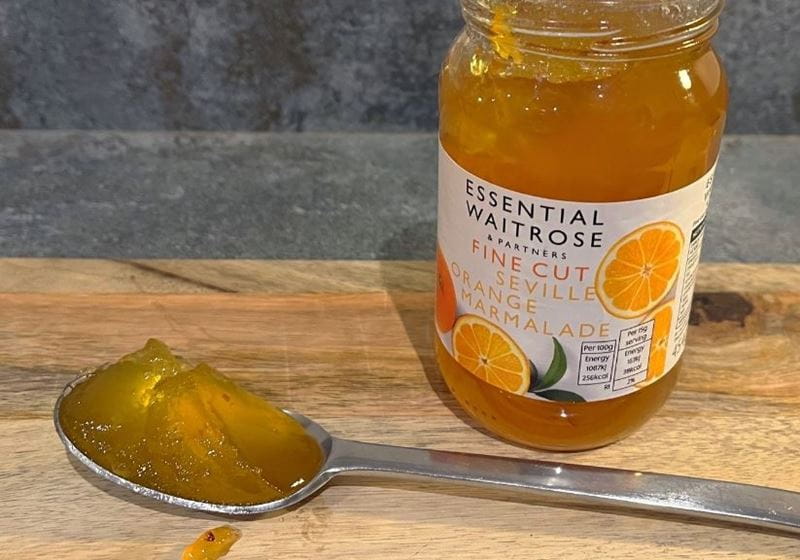
The Waitrose Essentials marmalade contains 25g of fruit per 100g, which is higher than some of its budget rivals.
However our panel members said the marmalade didn't taste of orange.
"All I am getting is sugar," said one.
Others said there was a tiny hint of bitterness, but most felt this was more of a sweet jelly than a marmalade.
454g - price: £2.10 (Sainsbury's, Co-op, Asda, Tesco, Amazon)
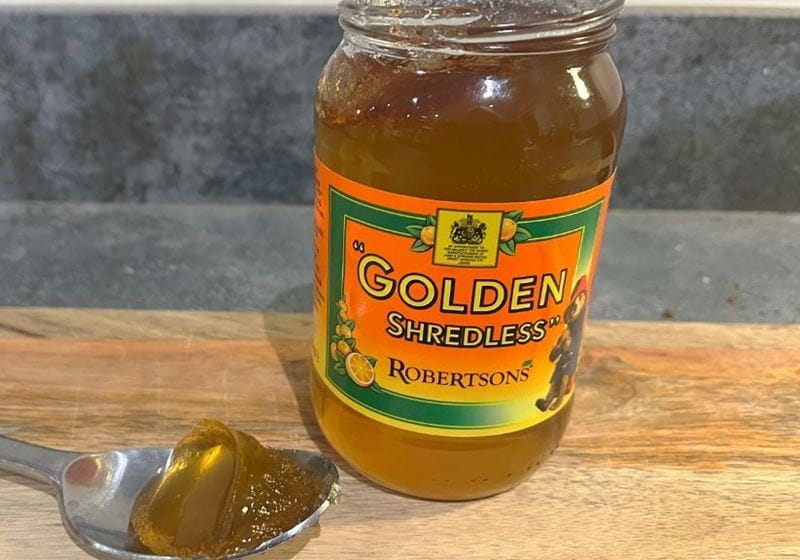
Robertson's was established in 1864 when Mrs Robertson started making marmalade in the family grocery store in Paisley, Scotland. The brand is synonymous with Paddington and had a Royal Warrant from the late Queen Elizabeth.
It's most famous for its Golden Shred Marmalade, but the Shredless is becoming more popular.
However our testers weren't convinced by it.
"It's the sort of marmalade you get in a 2* hotel," one quipped. The marmalade has 20g of fruit per 100g, but our panel felt it was more like a packet made jelly.
It was too sweet for our team, but not the worst on test.
420g - price: 73p (Morrisons, Amazon)
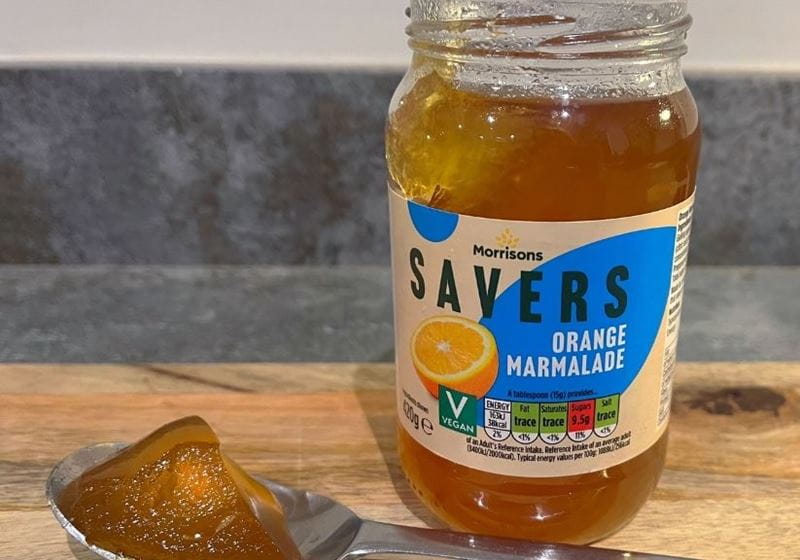
This Morrisons marmalade was one of the three cheapest on test. It contains 20g of fruit per 100g.
Our testers said it was jelly-like but it did have some bitterness.
"It was better than I thought it was going to be," one said. It was a marmalade our testers said they wouldn't remember, but if you are watching every penny then there were worse in the test.
454g - price: 79p (Tesco)
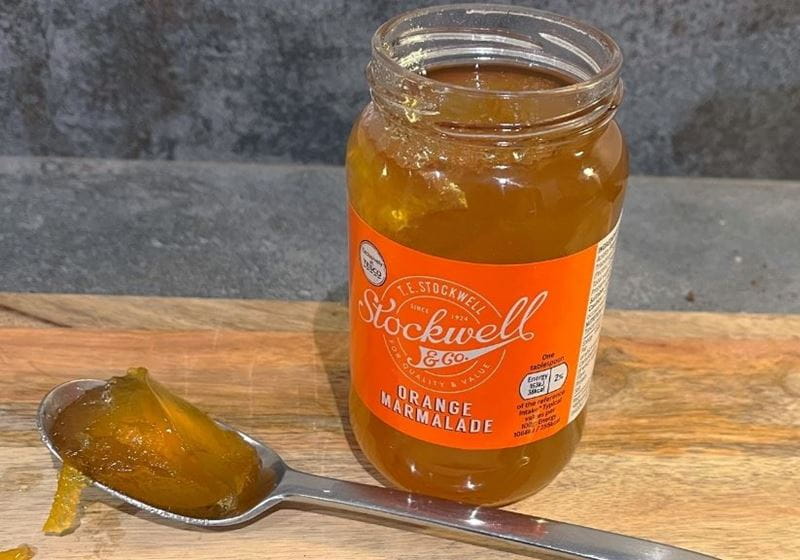
The Stockwell & Co Marmalade is a few pennies more than the Morrison's Savers, but you get an extra 34g in this jar.
It contains 20g of fruit per 100g and it wasn't popular at all.
"It's a very sweet jelly, very synthetic and with candied peel, rather than any bitterness," one of testers complained.
The panel agreed it wasn't any better on toast. Joint last place.
454g - price: 79p (Aldi)
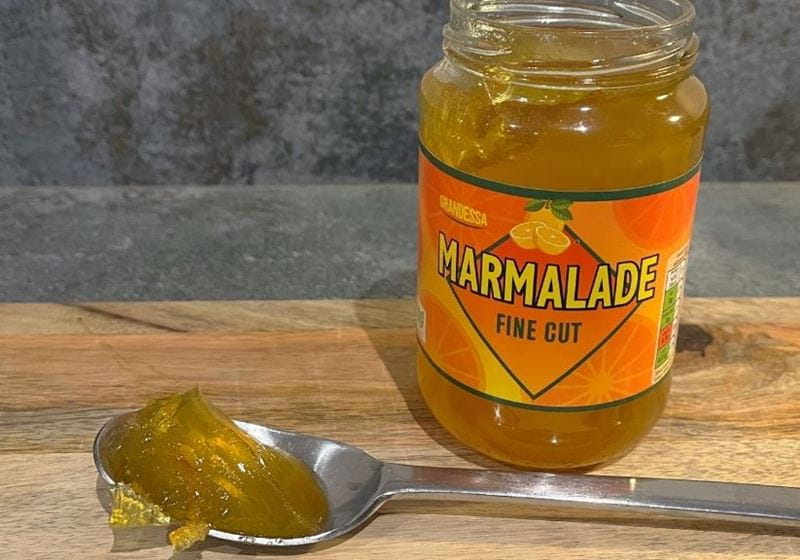
Oh Aldi.
Normally a favourite for delicious food finds, Aldi was our biggest disappointment of the test.
The jar was the same price as the Stockwell & Co product and just as bad.
"It's like a jelly cube," one tester said. There was no taste of fruit, despite containing 20g per 100g. All our panel got from this marmalade was sugar - and spreading it on toast didn't make any difference.
We were secretly hoping for a budget winner in our test, but maybe the German store hasn't quite grasped the difference between marmalade and jam.
A big thanks to Goytre Hall for hosting our tasting session.
Saga Magazine's managing editor Jennie Buist makes marmalade every year to her mother's recipe.
"This is a wonderful recipe and it works a treat," she says.
Makes about 6 x 1lb/450g jars
Wash the oranges well, then halve and squeeze them, keeping the juice.
Use a spoon to scrape out the oranges, putting all the pips and membranes in a small pan with a pint of water.
Bring to the boil, cover and simmer, stirring often, for half an hour or so.
Meanwhile, cut the skins in half and put them in a large pan, pressing them flat. Add a pint (600ml) of water and bring to the boil. Cover and simmer gently for two hours until tender, checking and topping up with water if necessary.
Drain the skins, and return the cooking water to the pan. Cut the skins as coarse or fine as you like.
Sieve the pip liquid into the large pan with the cooking water, rigorously squeezing every scrap of the gloopy liquid out.
Warm gently, then add the sugar and stir until dissolved. Add the chopped skins, bring to the boil and spoon off any scum. Cook until almost at setting point.
Add the reserved orange juice and the lemon juice. Boil again to setting point, which should take no more than five minutes. Test for a set and pot.
Phillipa Cherryson is senior digital editor for Saga Magazine. Phillipa has been a journalist for 30 years, writing for national newspapers, magazines and reporting onscreen for ITV. In her spare time she loves the outdoors and is an Ordnance Survey Champion and trainee mountain leader.
View author page
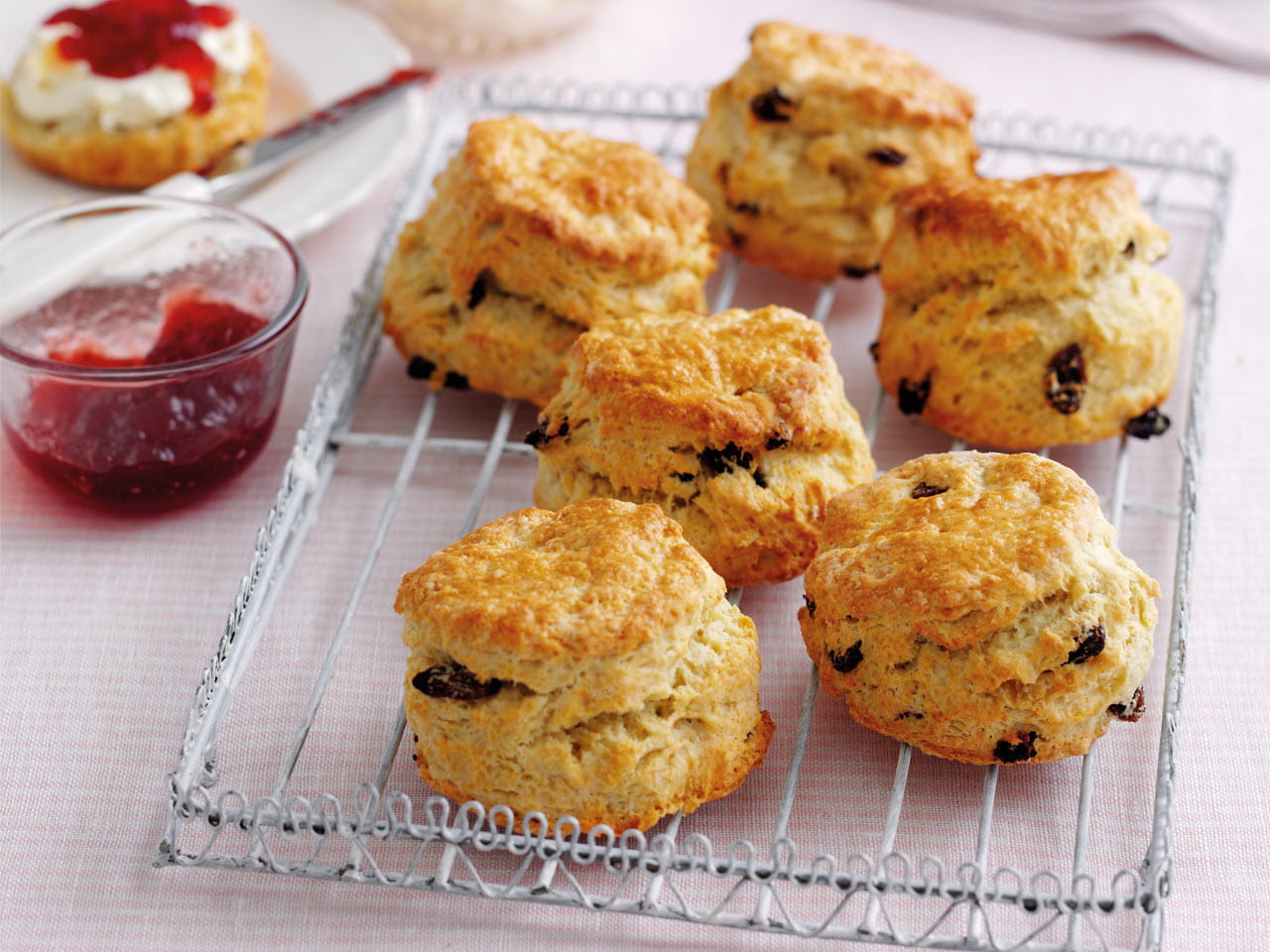
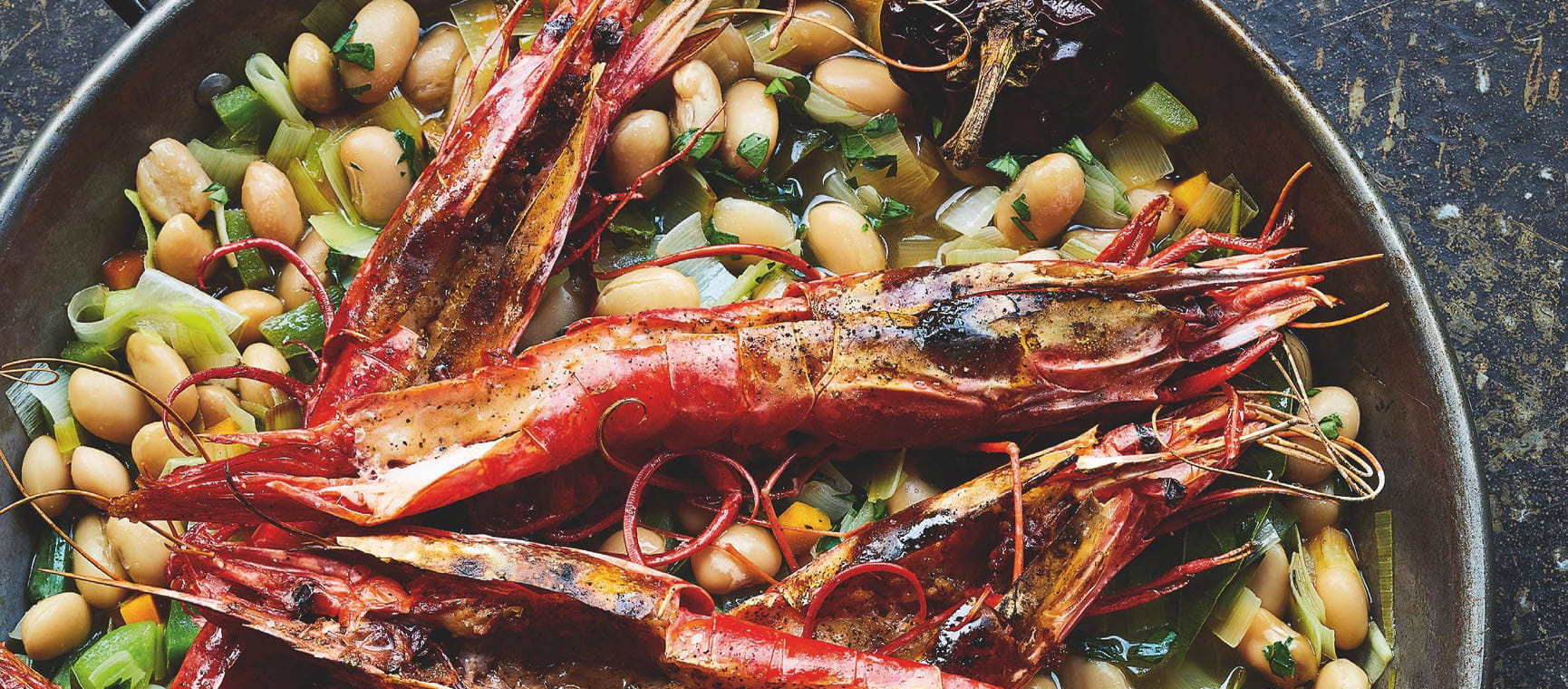
Celebrity chef James Martin shares his recipes for Valencian Beans and Prawns and Creme Caramel with Spiced Seville Oranges.
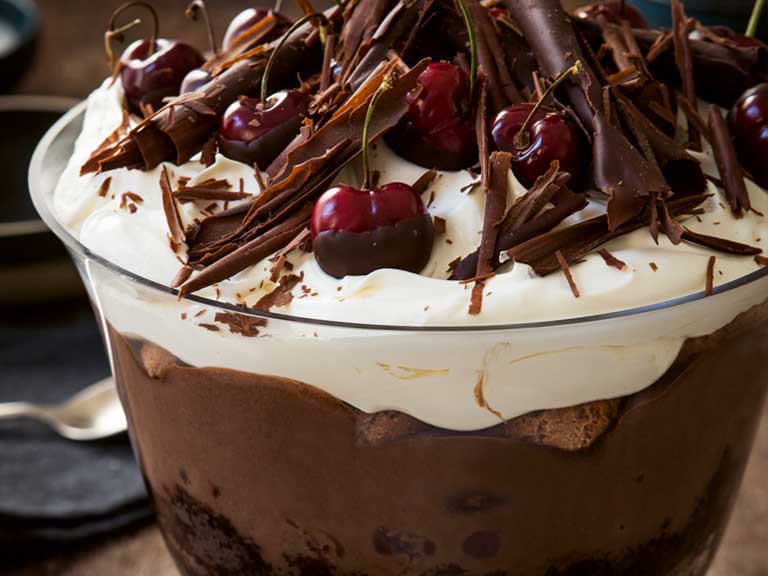

As summer approaches, our expert says it’s time to reappraise rosé and seek out more robust styles.

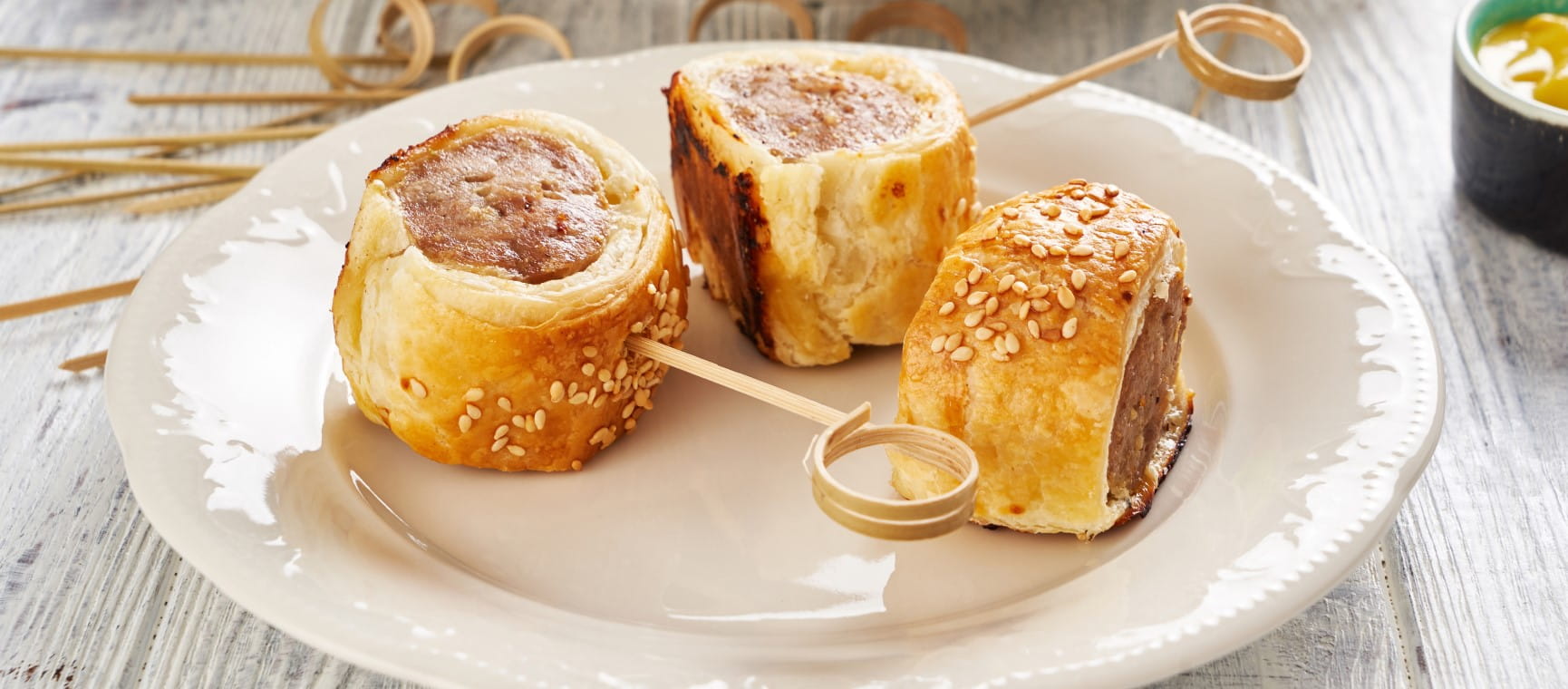
From parties to picnics, mini sausage rolls are the perfect snack. But which ones are our experts’ favourites?

Both sit nicely atop your kitchen counter, but is one better than the other?
